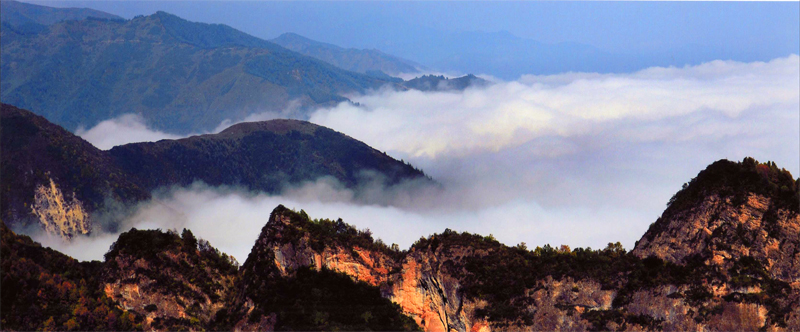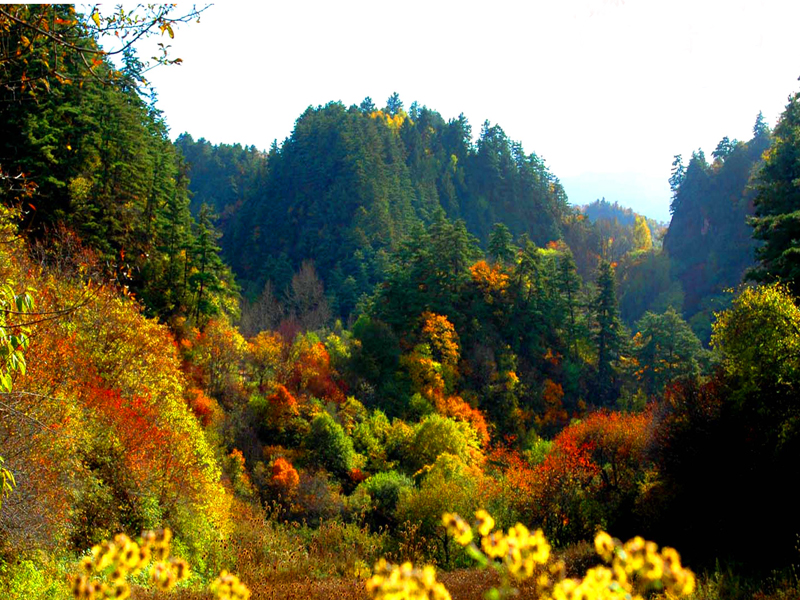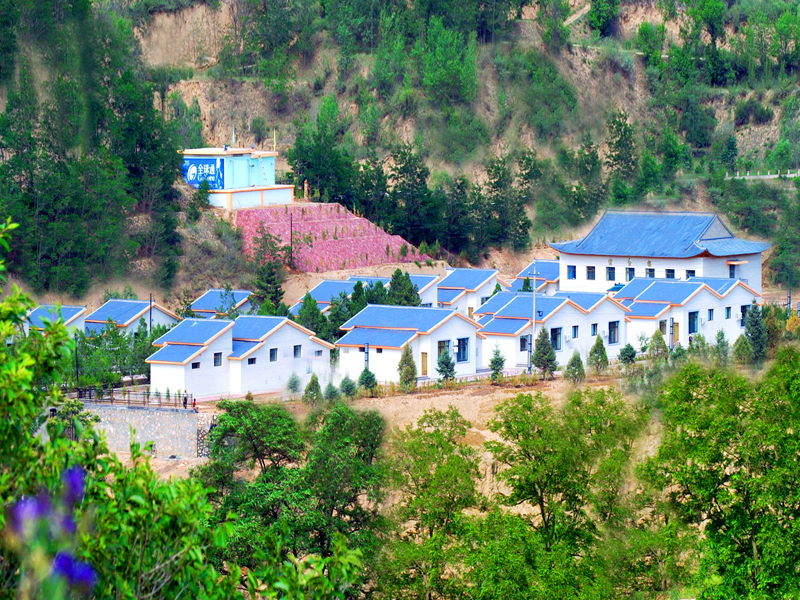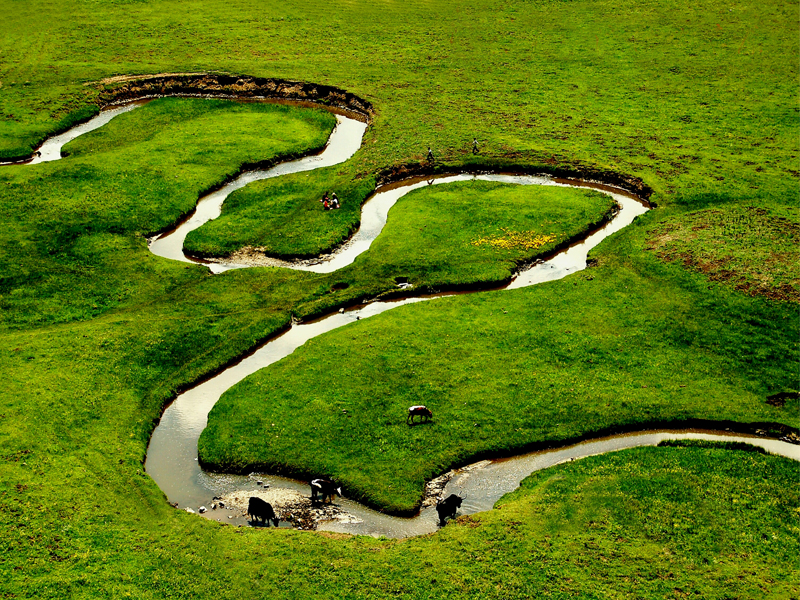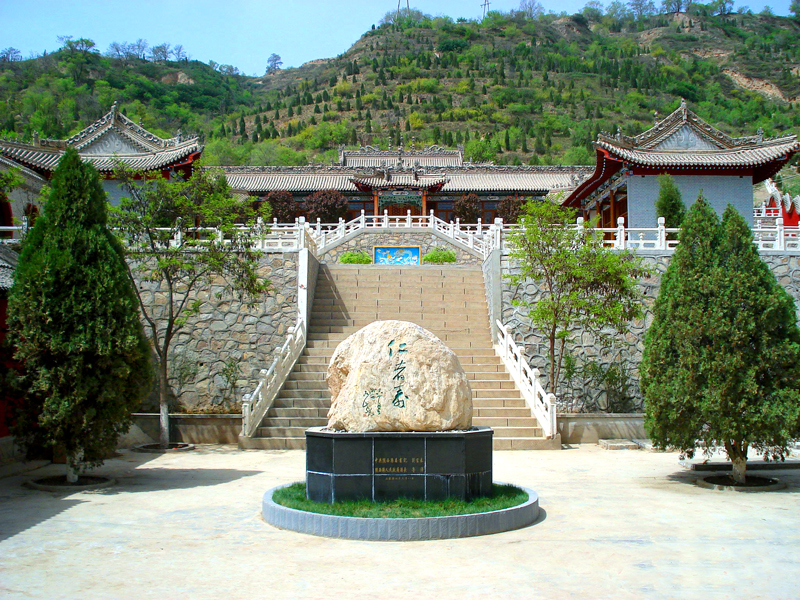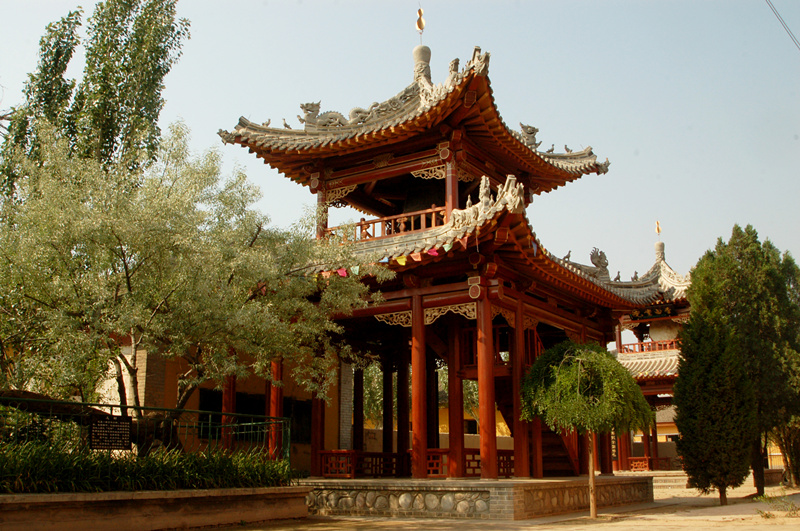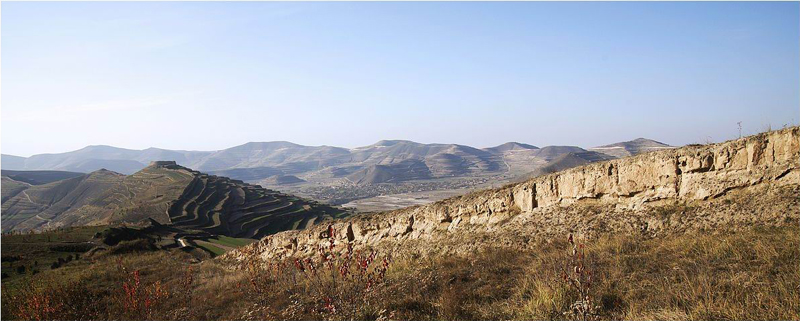Dingxi City
Dingxi City, also called “Longzhong", lies in the central part of Gansu province. Strategically located, it is a crucial pass in the ancient Silk Road and the New Eurasian Continental Bridge. It is the east gateway to Lanzhou which is known as “the key hub of Gansu province and portal of Lanzhou". Under its jurisdiction are Anding District and six counties – Tongwei, Longxi, Zhangxian, Weiyuan, Lintao and Minxian. Dingxi covers an area of 20.3 thousand square kilometers, having a population of 2.675 million people. Dingxi is a typical hilly-gully region in the Loess Plateau, also called “a city created by the Aeolus". Topographically, Dingxi declines from the southwest to the northeast and the peak in the southwest is Chengmen Village, Gaofeng Township with an altitude of 2577.3 meters; the lowest point in the north is Guanchuan Valley with the altitude of 1671.3 meters. The urban area’s altitude is 1898.7 meters. The whole city domain lies in the Guangchuan River Basin which is the branch of Zuli River Basin. Its altitude is between 1930-3941 meters, with an average altitude of 2080 meters. Its topography declines from southwest to northeast, with complicated and varied landforms. Dingxi has a long history and splendid culture, and is one of the birthplaces of Chinese civilization. Plenty of national and provincial forest parks here enjoy a good reputation both at home and abroad, such as Guiqing Mountain, Zheyang Mountain and Lianfeng Mountain. Majiayao Qijia and Siwa cultural relics of the Neolithic Period are very famous. There are quite a few sites having special values for development: the Great Wall Remains of Warring States and the Qin Dynasty stretching about 300 kilometers from Lingtao to Dingxi, “Ancestral Hall of Li (the greatest surname in China)" for Li families at home or abroad to seek their roots and admire their ancestors, and Tongwei Hot Spring. Within the city domain, there are also Guiqingshan National Forest Park (AAAA)
Located 70 kilometers south of Zhangxian County, Guiqingshan National Forest Park is the most distinctively beautiful spot in the Loess Plateau. It is honored as “small Huashan Mountain" and “Guiqing Fairyland" in the central Gansu region, attracting visitors with its magnificent mountains, clean water and various forest plants. This park is composed of two major parts and they enhance each other’s beauty-- Guiqing Mountain in the east and Zheyang Mountain in the west. Guiqingshan lies in a limestone-heavy area, with mountains of various shapes “propping up the sky". Having two zones—Guiqing Mountain and Guiqing Valley, the forest park tales up an area of 2.33 thousand hectares and there are over 200 hectares of thousand-year-old pine trees and old-growth forest in Gusha Buddhist Temple, which is called “a natural botanical garden" for growing more than 500 breeds of medicinal plants and plants for beautifying or appreciating purposes. Founded in the Ming Dynasty, Gusha Temple has enjoyed Zheyang Mountain is situated in Dacaotan Village, 29 kilometers west of Zhang County, famous for the saying “the sun is shadowed by mountains here". This mountain was named as “little Kongtong" in ancient times and consists of three scenic spotss—West Stream, East Stream and Yimen Mountain. Zheyang Mountain has a large collection of rocky cliffs, lush grass and forest, unique and rare animals as well as numerous historical sites. It is acknowledged by experts as a suitable option for adventure travel in Northwest China Shouyang Moutain of Weiyuan County (AAA)
With the altitude between 2186 and 2509 meters, Mount Shouyang is located in the Xiangtang Valley of Lianfeng Township, which is 34 km southeast of Weiyuan County. The Shouyang (literally the earliest sun) Mountain got its name from the fact that it “meets the first ray of morning sun with its great height," being tallest among the surrounding mountains. There is a famous story about Shouyang Moutain: During the end of the Shang Dynasty and the beginning of the Zhou Dynasty, two princes of State Guzhu, Boyi and Shuqi were too modest to inherit the throne that they both were entitled to, and they came to Zhou State together and settled there. On hearing the news that King Wu of State Zhou intended to send troops to attack State Shang, they hurried to boldly remonstrate with King Wu about the decision before his royal carriage. However, King Wu refused their plea. Then the two princes were too resentful to have meals from State Zhou. They left and came to Shouyang Mountain and fed themselves on wild herbs. Before long they starved to death here. Stone Gate is at the northwest side of Shouyang Mountain. Two tall cliffs stand closely face to face, leaving a narrow space like a crack in a giant gate. In the bright moonlight, it is a most beautiful scene. There is a reservoir by the two cliffs. With a total capacity of more than five million cubic meters, this reservoir is an ideal water park. Behind the reservoir, there is Patio Canyon stretching eight kilometers. Looking up at the steep cliffs on both sides, people feel like they are trapped in the bottom of a well, and the blue sky seems to be a thin line. The canyon looks like a seam in Hot Spring Resort of Tongwei County (AAA)
Tongwei County Hot Spring Resort is located in the Tangchi Valley, 8km southwest of Tongwei County in central Gansu Province. With a long history, the spring here can have therapeutic benefits. The spring water is drinkable and refreshing. Comfortable water temperature, considerable volume of flow and good water quality make the spring No.1 among the springs of Northwest China, and it has been praised as the Castalia of Gansu Province. Tongwei Spring Resort covers an area of 17,800 square meters and a total building area of 3,560 square meters. In the bath area, there are 4 villa deluxe rooms, 25 standard rooms and 40 normal rooms. Daily guest capacity is more than 600 bath guests, and peak-time service capacity is for over 100 guests. The hotel has 180 beds. The rural home inns can provide guests with entertainment services such as chess, catering, first aid and so on. Ten thousand tropical fish in the pond make it the premier tourist destination for Minxian County Langdu Wetland Prairie (AAA)
Langdu Wetland Prairie is located near Nianjiazhuang Village and Langducun Village of Lvjingzhen Township, which is 70km east of The landform is plain and hilly and the southeast is higher than the northwest. The mountaintops are perfectly round and the land is open and flat. The climate is nice and cool with the annual average temperature of 4.9℃. There are rivers and vast prairie here; the average latitude is 2600m. This prairie is the best choice of eco-tourism not only for its beautiful scenery but also for the folk customs. The favorable ecological environment has benefited from the abundance of local products, including Juema pigs (Fed with silverweed cinquefoil root, the pigs’ meat is superb.), fritillaria, winterworm summerherb (Chinese caterpillar fungus), soybean, highland barley and oats. You can enjoy the beautiful scenery of the prairie and the hospitality of steppes nomads. The footprints of the First, Second and Fourth Routes of Red Army in the year 1935 and 1936 can still be found here. In September 1935, the First Route Red Army left Hadapu Town, and crossed the Langdu Prairie via Lichuan Town. A year later, the Second and the Fourth Routes Red Army crossed the prairie again after a brief reorganization in Minxian County. Renshou Mountain Forest Park of Longxi (AAA)
Five hundred meters southwest of Longxi County, Renshou Mountain Forest Park covers an area of 58.8 hectares, stretching from east to west. The park is 2057 meters above sea level. Renshou Mountain enjoys a good reputation and long history, and is always called “The mountain beyond the sky". The park is constructed against the mountain, and the scenic spots are scattered in the green landscape. There are seven sections for different purposes and activities: The Park Entrance, Science Education Area, Culture and Entertainment Area, Cultural-Relics Area, Forest Sightseeing Area, Ecological Areas, Recreation areas. At the entrance, the Honorific Arch over the gateway stands grandly, displaying the classical style of Longxi architecture. The Arch Bridge of white marble represents the superb local craftsmanship. The 312-step stairway leads to the Octagonal Pavilion halfway to the top, a good vantage for a panorama. The children’s centre at the foot of the mountain has a young hero’s statue -- Zhang Xinlong sacrificed himself to save a drowned child. Young pioneers come here to pay tribute to him and gather for parties here. Li Palace
Located in Miaoer Lane in Yixin Village, Nanan Township of Longxi County,Li’s Palace (Lee Hall) is an ancient imperial building complex of the Tang Dynasty. It is the hall for the Li family to have reunions and to worship their ancestors. It is well known at home and abroad because Li Shimin, Emperor Taizong of the Tang Dynasty, Emperor Taizong of TangEmperor Taizong of Tangwrote the Chinese inscription of “Li’s Palace" personally. It is not only Built in the middle times of the Tang Dynasty, “Li’s Palace" is a complex with three levels of buildings. Great in number and in style, the imposing buildings represent an elevated level of architecture. The succeeding generations have been worshiping their ancestors here. In the main Worship Hall there hangs a horizontal inscribed board “Longxi Hall". The rooftop Holy Beasts are the brick carvings from the North Song Dynasty. The sleek aesthetic style, vivid and intact architecture, and concise and smooth lines make them all the more precious for artistic and archaeological studies. Qin Great Wall Ruins
King Zhaoxiang of the State of Qin, the grandfather of the First Emperor Qin Shiuang, built the Great Wall in the 4th century BC, which started from Shawangpo of Duncun Village, 15 kilometers away from Lintao County, and ended in Jieshi of Liaodong (current Pyongyang of North Korea). The total length is 10 thousand li (a Chinese measurement, i.e. 5000 kilometers), so it is called the Great Wall of 10 thousand li. The Qin Great Wall runs across four counties -- Lintao, Weiyuan, Longxi and Tongwei-- as well as 27 villages, with a total length of more than 250km. King Zhaoxiang of Qin in the Warring States Period eliminated Yiqurong and built the Qin Great Wall in Weiyuan County, which is the oldest part of the Great Wall in Chinese history. The residue height of most parts of the Great Wall is about 3 meters, and some higher parts can even reach 10 meters. There is a small beacon tower every 500 meters and a big beacon tower every 1000 meters, very spectacular manmade wonders indeed. The Qinwang Temple at the foot of the Great Wall is the place where Emperor Qin Shihuang stayed for one night in his westward tour to Longxi County. The descendants built this temple in honor of him. There is a poem on the remnant mural of the temple,“Swiftly Weihe River flows day and night;Till how long will the lords fight?Relics of the Great Wall are tattered and torn;Yet the olden-day Qin nobles are long gone." |
Dingxi City
December 21, 2016
VIEWED: 0
Recommended Products
see all-
Paris to Marrakech
HKD 6415 + Book -
Spain, Portugal & Morocco
HKD 3645 + Book
